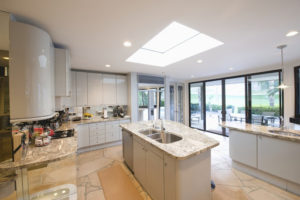“Roof Lanterns UK – Using FSC Sourced Wood”
Posted by: Laura Wakeham. on the 05th August 2015
At Prestige Roof Lanterns UK, we pride ourselves on using high-quality FSC sourced wood for all of our roof lanterns, roof lights and skylights.
Most of us know that good quality timber is essential in terms of ensuring a durable roof lantern that is easy to maintain and, ultimately, prevents the need for replacement due to rot and decay.
But, since we usually mention our FSC sourced wood at Prestige Roof Lanterns UK, we thought we’d explain a bit more about what FSC accreditation really means.
Who are the FSC and what do they do?
According to their website, the Forest Stewardship Council is an international and non-governmental organisation that promotes the responsible management of the world’s forests.
The FSC runs a global forest certification system that features two key elements. The first element is the Forest Management and Chain of Custody certification which allows consumers, like Prestige Roof Lanterns UK, to identify, purchase and use timber that is produced from well-managed forests.
The second element is the FSC’s “tick tree” logo which is used on product labels to indicate whether products are certified under the FSC system. When you see the FSC logo on a label on timber and other wood products, like paper, you can be confident that you are not contributing to the destruction of the world’s forests.
Why We Choose FSC Sourced Wood at Prestige Roof Lanterns UK
As well as being confident that you are not contributing to the destruction of the world’s forests, choosing FSC wood has a number of advantages. According to their website, the FSC is a trusted organisation that is proven to enhance businesses by encouraging additional clients, increase profit and enhance public image.
Firstly, the FSC label guarantees that harvested trees are replaced or allowed to regenerate naturally which means that future generations will also be able to enjoy the benefits of the forest too.
In addition, parts of the FSC forests are protected entirely, in order to protect rare animals and plants. The fact that the FSC is the only wood certification scheme that is endorsed by major environmental charities like WWF, Greenpeace and The Woodland Trust, suggests that FSC forests are definitely the most sustainable forests to obtain wood.
What’s more, the FSC claims to protect the rights of native people to use the forest. For example, if they have sacred sites in the forests these are exempt from felling (being cut down).
In addition, in an FSC forest, the forest owner must use local workers to run the forest, as well as provide training, safety equipment and a decent salary for them. Where possible, the forest owner is obliged to support the community in other ways too, like supporting the development of schools. Therefore, the FSC assures a better and moral livelihood for local workers who may not otherwise find sustainable work.
Finally, FSC wood is tracked all the way from the forest to the store. Each link between the forest and the consumer is tracked so that FSC certified wood is clear to identify.
For more information about FSC sourced wood take a look at the FSC website: http://www.fsc-uk.org/about-fsc.2.htm.
If you are interested in a roof lantern, roof light or skylight, manufactured using FSC sourced wood, contact Prestige Roof Lanterns UK on 0843 886 7949.

